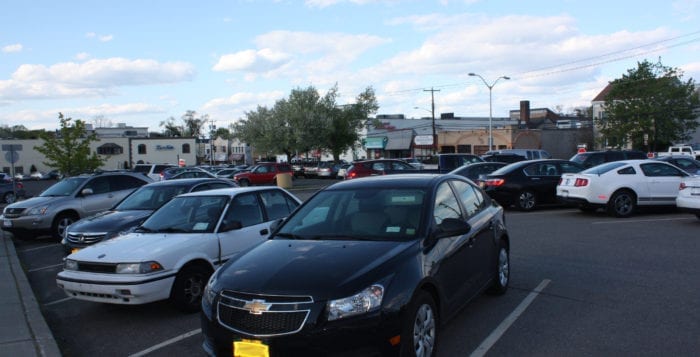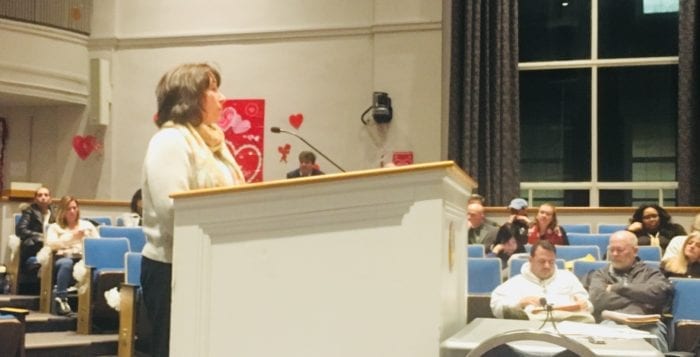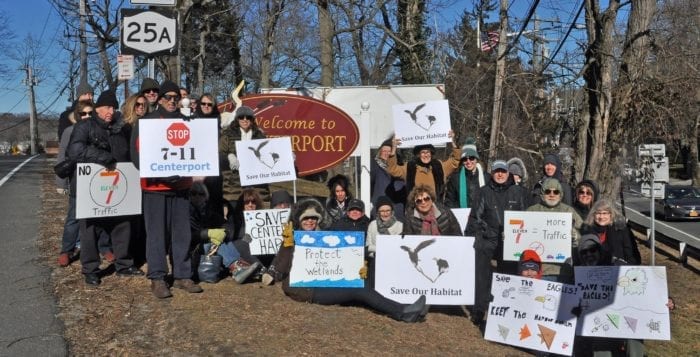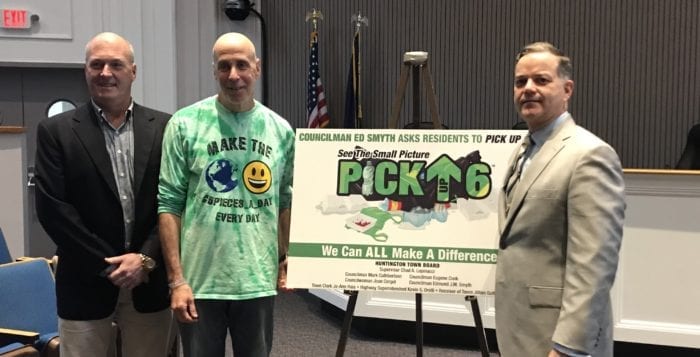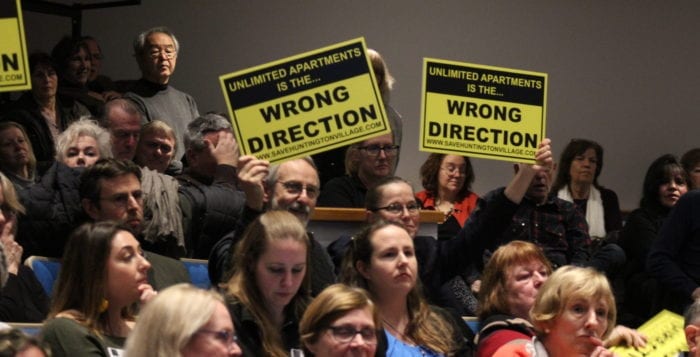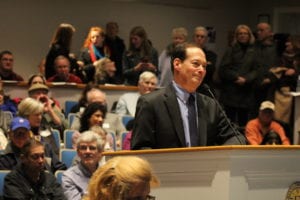By Donna Deedy
Suffolk County Water Authority and Suffolk County Legislator Dr. William “Doc” Spencer, chair of the legislature’s health committee, announced April 11 the imminent construction of a new Advanced Oxidation Process water treatment system to be installed at the authority’s Flower Hill Road pumping station in Halesite. The new system is designed to remove the currently unregulated contaminant 1,4-dioxane from drinking water. It will become the third new processing system for the county, joining the existing advanced system in Central Islip and another soon to be constructed system in East Farmingdale.
The chemical 1,4-dioxane has been designated by the U.S. Environmental Protection Agency as a likely carcinogen associated with liver and kidney damage after a lifetime of exposure to contaminated drinking water.
“Though this compound is not currently regulated at the federal or state level we’re proactively installing AOP treatment at priority locations,” water authority chairman Patrick Halpin said. “This pump station on Flower Hill Road was a priority for us given the levels of 1,4-dioxane detected by our laboratory.”
The Flower Hill Road well field was selected because it had the third highest detection for 1,4-dioxane of all of the water authority’s well fields. The highest detections were in Central Islip, and the second highest in East Farmingdale.
“This pump station on Flower Hill Road was a priority for us given the levels of 1,4-dioxane detected by our laboratory.”
— Patrick Halpin
“The emerging contaminant 1,4-dioxane has been a deep concern of mine as a local legislator. I am thankful for the Suffolk County Water Authority’s partnership and willingness to confront this complex water quality and safety issue,” said Spencer. “Their swift action to install this innovative technology at the Flower Hill pump station in Huntington, the third site in Suffolk County, demonstrates their ongoing commitment to protecting our drinking water.”
The three wells at the Halesite pump station averaged a detection of 2.02 parts-per-billion of 1,4–dioxane, with well #1 having the highest detection at 3.84 PPB. The New York State Drinking Water Quality Council has recommended 1,4-dioxane be regulated statewide at a level of 1 PPB, but the state’s department of health has not yet enacted the recommendation.
The advanced process works by introducing an oxidant to the raw groundwater, in this case hydrogen peroxide, and then passing that mixture through an ultraviolet light reactor. The ultraviolet light reacts with the oxidant to destroy the 1,4-dioxane molecules. The water is ultimately passed through a carbon filter to remove the peroxide and any by-products from the reaction.
Costs to install the new treatment system exceed $1 million, which does not include annual maintenance costs. In an effort to defray these expenses, the water authority filed in December 2017 a lawsuit against the chemical companies responsible for polluting Long Island’s sole source aquifer.
In its 1,4-dioxane complaint, the water authority named Dow Chemical Company, Ferro Corporation, Vulcan Materials Corporation, Proctor & Gamble and Shell Oil Company, alleging that their products — primarily industrial degreasers, laundry detergents and other household products — are to blame for the contamination.
The suit also includes a complaint about two other contaminants, perfluorooctanoic acid (PFOA) and perfluorooctane sulfonic acid (PFOS). The PFOS and PFOA claims were filed against the 3M Company; Buckeye Fire Equipment Company; Chemguard, Inc.; Tyco Fire Products LP and National Foam, Inc. and allege the companies knew or should have known that the firefighting foam they made, distributed or sold is dangerous to human health and contains unique characteristics that cause extensive and persistent environmental contamination.
All chemicals are potential carcinogens. The PFOA and PFOS are particularly dangerous to pregnant women and children.
“It’s important that we take a proactive approach to removing these types of contaminants, but our ratepayers should not have to bear those costs,” SCWA board member and Huntington resident Jane Devine said. “They should not have to pay for the reckless behavior of companies who either knew or should have known about the effect this compound would have on groundwater.”
The water authority is also working with the county and town to connect people with private wells in certain communities with the public water supply to avoid contamination.
The Suffolk County Water Authority is an independent public-benefit corporation operating under the authority of the Public Authorities Law of the State of New York. Serving approximately 1.2 million Suffolk County residents, the Authority operates without taxing power on a not-for-profit basis.
This post has been amended to reflect better who filed the 2017 lawsuit against chemical companies, as well as clarify what the water authority is doing to connect people with private wells.




